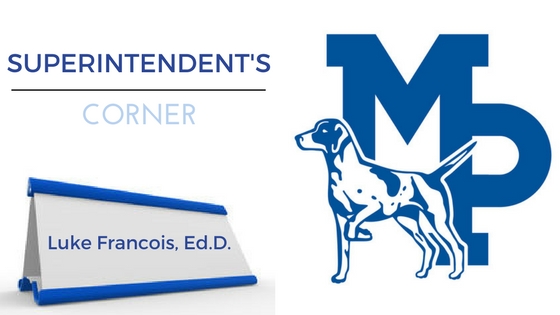
By Superintendent Luke Francois
A New Year’s Resolution is a tradition in which a person resolves to change an undesired trait or behavior to accomplish a personal goal or otherwise improve their life. (Retrieved from en.wikipedia.org) New Year’s Eve I talked with a friend that resolved to stop cursing. Another shared a resolution to reduce time on social media by not using Twitter after 8 pm. A final resolution shared was to exercise more.
A 2007 study by Richard Wiseman from the University of Bristol involving 3,000 people showed that 88% of those who set New Year resolutions fail, despite the fact that 52% of the study’s participants were confident of success at the beginning. Men achieved their goal 22% more often when they engaged in goal setting (a system where small measurable goals are being set such as a pound a week, instead of saying “lose weight”), while women succeeded 10%.
According to a New Year’s Resolution Study referenced in Wikipedia, “The most common reason for participants failing their New Years’ Resolutions was setting themselves unrealistic goals (35%), while 33% didn’t keep track of their progress and a further 23% forgot about it. About one in 10 respondents claimed they made too many resolutions.”
At Mineral Point, each teacher and principal is annually required to set a Personal Professional Goal that is SMART (specific, measurable, attainable, relevant, and time-bound). Specific: What do I want to accomplish? Measurable: How will I know when it is accomplished? Achievable: How will I achieve this goal? Relevant: Does this seem worthwhile? Timebound: What can I do six weeks/months from now?
Using SMART principles, goals are achieved because the goals are realistic (attainable), progress is tracked throughout the year for accountability, and end of year progress is measured for effectiveness. A strategic plan, recently approved by the Board of Education, now guides the work of the district for the next three to five years. The administrative team is in the process of initiating SMART goals to guide district actions, both fiscally and operationally. The method of setting goals, monitoring for progress, and resetting new goals as part of a continuous improvement cycle has served the district well in recent years.
As we embark on 2018, let’s all commit to turning our resolutions into SMART goals. Everyone wins when we resolve to improve ourselves and our schools and are successful in doing so.

